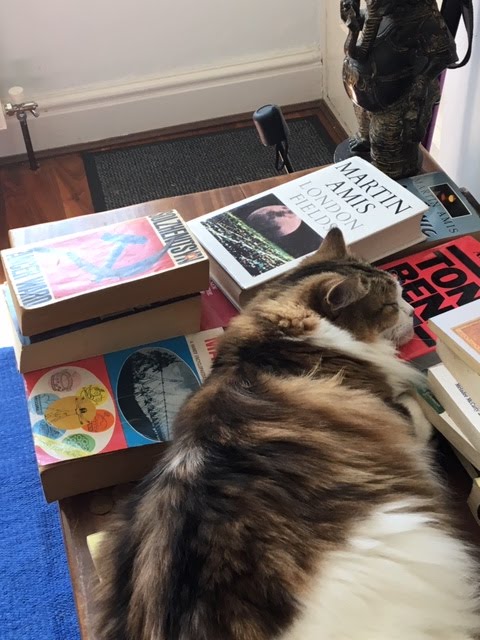With
respect to the actual rituals accompanying weddings, things have changed in
India in recent times. In Thalassery, which has managed to stay unscathed,
pristine and undeveloped, even when the rest of Kerala is rapidly advancing within
the twenty-first century, marriage ceremonies are no longer short or simple;
diversity has entered in a big way. Now, in 2017, the accretions over the
decades to what was a simple, pared-down marriage-ritual confound me.
First there was the thali, the sacred chain round the neck, to be blessed by the pujari
and tied round the bride’s neck by the groom. (No such leashes for him.) This
would be removed only when she was widowed or dead, so a life-long encumbrance
when bathing, swimming etc. I got rid of mine somewhere along the way when no
one was looking, but I kept it in a quick-access place. In case. My husband was
not interested enough to notice that my thali had gone. Or indeed anything else
about me had gone.
The thali was a distinctly South Malabar
practice; my husband was from Palakkad, in South Malabar. Via Sri Lanka. I was from the North. Once upon a time, Nairs
from the North and south of Malabar did not inter-marry. South Malabar by our
reckoning started some sixty-five miles south of Thalassery, the other side of
the Baratha puzha, the notional
boundary river, but things were changing fast.
To begin with, there is the amount of gold the brides carry around on their weary arms and neck. A jeweller in Kochi told me that some parents buy gold by the kilo now-a-days. After the wedding the gold is stowed away in a vault or a strong box and hardly ever sees the light of day. The parents may have sold ancestral land to bestow this amount of metal on their daughter. In my time, the gold was minimal and nobody counted. I wonder why, in what is a country where there are many poor people, we don't use that lavish wealth to establish orphanages, educate girls, build schools and hospitals in remote villages... So much to do and we assign our assets to incarceration in a dark place!
To begin with, there is the amount of gold the brides carry around on their weary arms and neck. A jeweller in Kochi told me that some parents buy gold by the kilo now-a-days. After the wedding the gold is stowed away in a vault or a strong box and hardly ever sees the light of day. The parents may have sold ancestral land to bestow this amount of metal on their daughter. In my time, the gold was minimal and nobody counted. I wonder why, in what is a country where there are many poor people, we don't use that lavish wealth to establish orphanages, educate girls, build schools and hospitals in remote villages... So much to do and we assign our assets to incarceration in a dark place!
When did the practice of exchanging rings
arrive in Nair rituals?. In the past, it had been a Christian practice, but by 1957, families
from Malabar were incorporating rings into the ceremony. Again, I took mine off
at some unknown guest house while on the road and forgot it. My husband similarly
got rid of his. Neither of us knew where the rings had gone. Or cared.
And in today’s elaborate weddings, the close
family and friends have to feed the bride and groom banana and milk after the
wedding. So, the couple sit on a raised platform and suffer this procession of
people thrusting spoons into their mouths. Where did that abomination come from?
Now, in the twenty-first century, the
marriage rituals from all over India have coalesced somewhat in terms of their
elasticity. Weddings can be anything from two to five days long, depending on
the wealth of the bride’s family and their inclination to show off. In one
wedding in Paris a few years ago, a wealthy Indian patriarch flew in his guests
from all over the world to attend his daughter’s wedding. Even the Mehndi ceremony, now so popular in
Kerala, came from the north of India; a whole day is devoted to it nowadays,
drawing designs on the palms of the bride, and a cohort of invited girls.
A recent aberration, if you are really,
disgustingly wealthy, is for family and guests to travel to a resort overseas
like the Maldives or Sri-Lanka for the wedding, the father of the bride picking
up the bill. Jesus wept!
I live in hope. Somewhere along the line, it
might dawn on a little girl watching that the emperor’s clothes are a matter of
illusion.

No comments:
Post a Comment